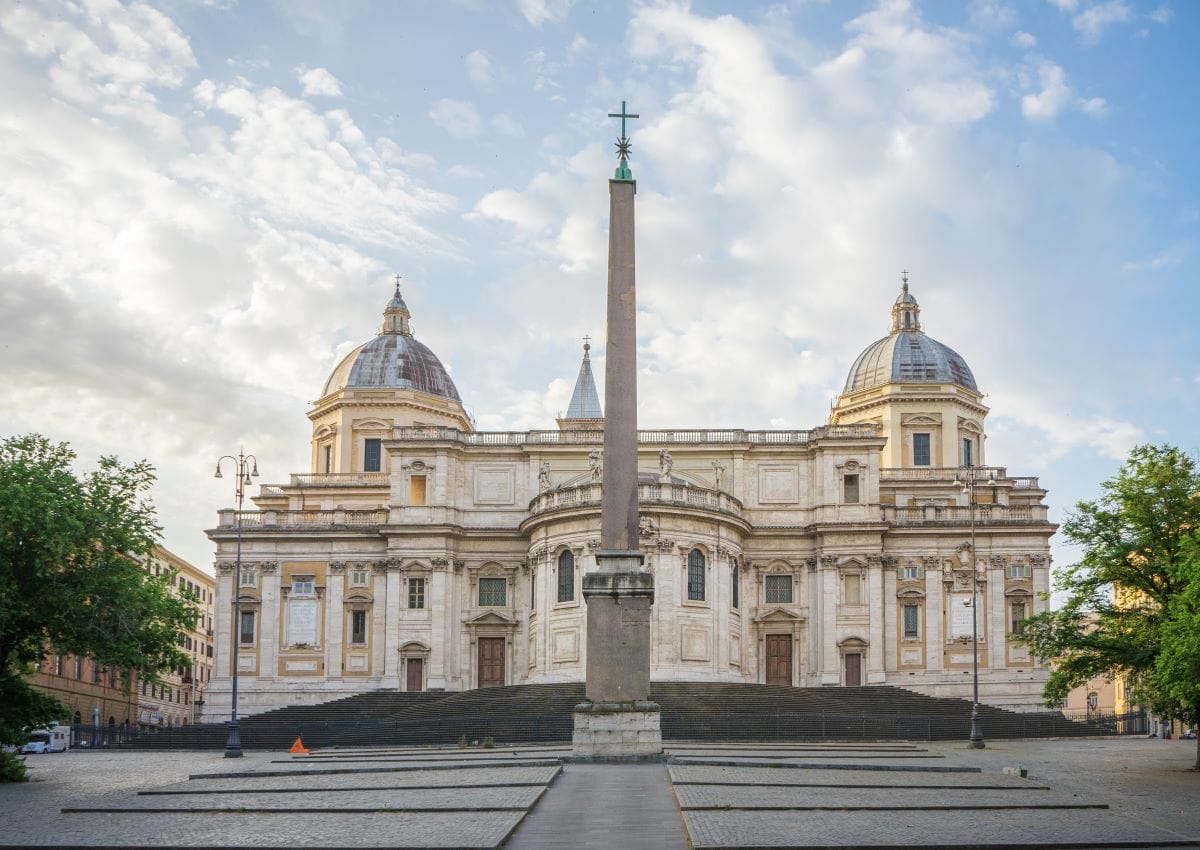It would not be an understatement to say that Rome is a city of churches. The Italian capital boasts more than 900 Catholic places of worship. And of the must-see churches in Italy, Santa Maria Maggiore is near the top of the list.
Read along as we discover the ins and outs of this iconic church in the Eternal City, and why it’s worth visiting during a trip to the city.
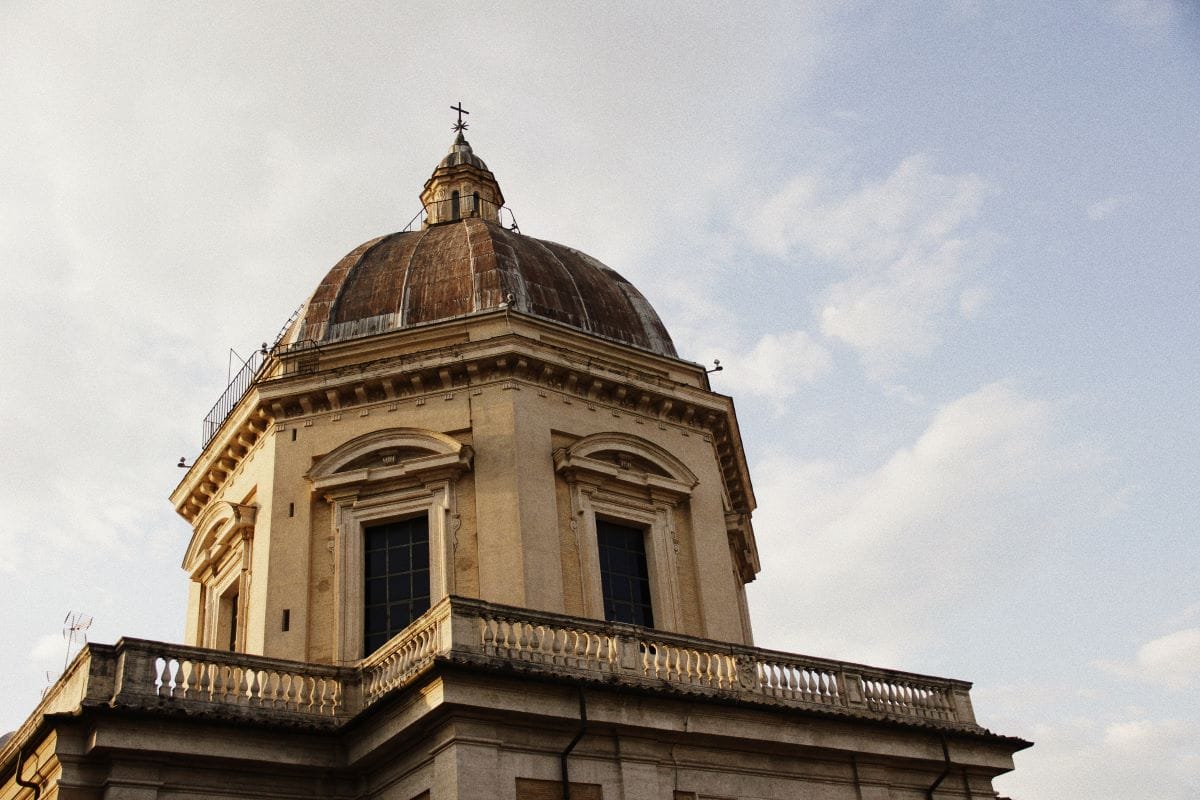
Santa Maria Maggiore, also known as the Basilica of Santa Maria Maggiore or the Basilica di Santa Maria Maggiore. Photo credit: Francesco Alberti
Table of Contents
ToggleBrief history of the Basilica of Santa Maria Maggiore
The papal basilica of Santa Maria Maggiore owes its existence to a meeting that took place in Ephesus, near modern day Selçuk, on the Agean coast of what is now Turkey about one thousand miles southeast of Rome. It was at the Council of Ephesus in the year 431 when Church authorities decided that Mary was, in fact, officially the Mother of God. That further accelerated the cult of Mary and soon churches would rise, their spires pointing heavenward, in honor of the Virgin Mary, Mother of God.
One of those churches is Santa Maria Maggiore, built in 432, just a year after the Council of Ephesus. Situated on Esquiline Hill—the tallest of Rome’s legendary seven hills—and more or less sandwiched between the Roman Forum and Termini Train Station near the bustling Via Cavour, the basilica is hard to miss.
Now with a bit of history out of the way, let’s explore the top reasons why you should make a visit to this church.
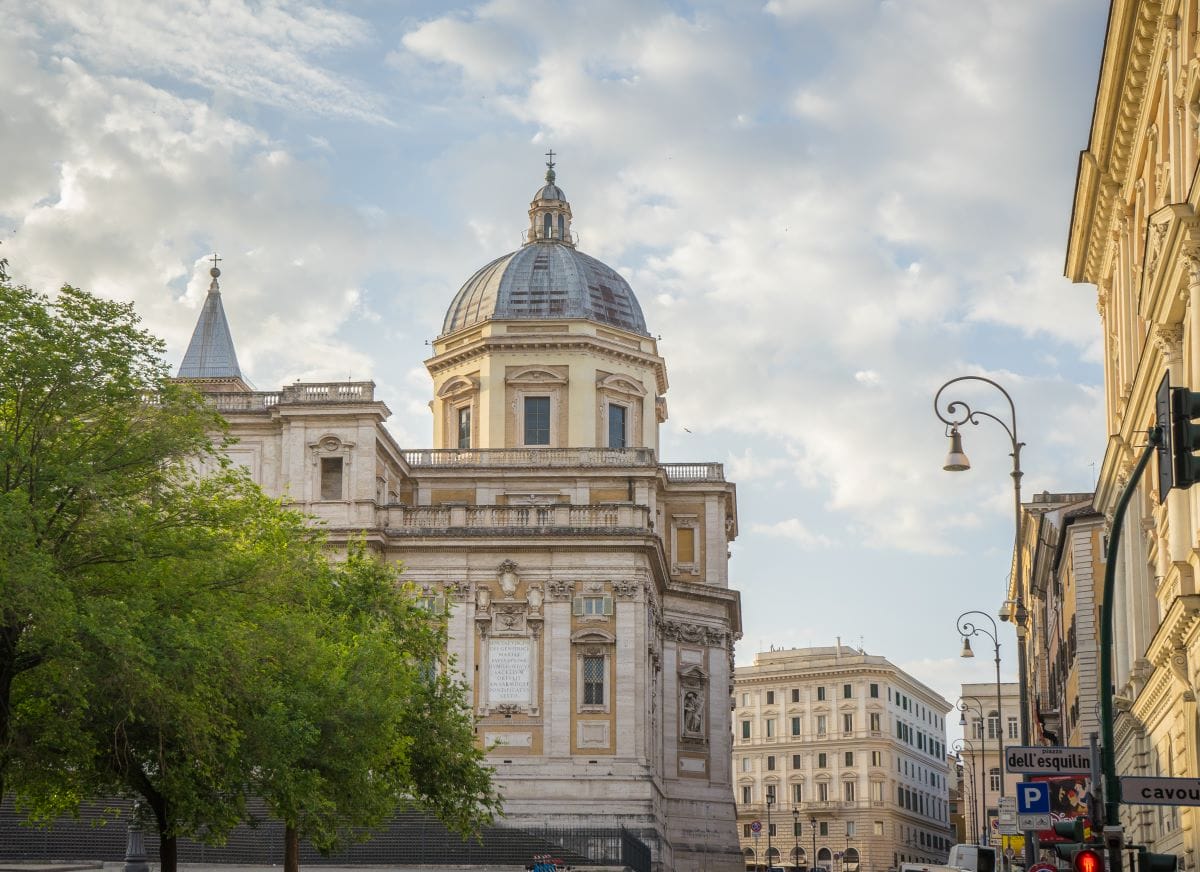
The basilica exhibits a blend of architectural styles, including Early Christian, Baroque, and Renaissance elements. Photo credit: Leonhard Niederwimmer
It’s one of the pilgrimage churches of Rome
If you’re more than just a casual tourist and are on a pilgrimage, Saint Mary Major, as it’s referred to in English, is one of the seven pilgrimage churches of Rome—along with San Giovanni in Laterano, Santa Croce in Gerusalemme, Santuario della Madonna del Divino Amore, San Lorenzo Fuori le Mura, San Paolo Fuori le Mura, and St. Peter’s Basilica.
And if you’re on a pilgrimage, some of the precious relics that have a home in Santa Maria Maggiore include a piece of Jesus’ manger, also known as the Holy Crib, and a piece of the True Cross, among a legion of others.
It’s a UNESCO-listed site
If you’ve come just to appreciate this splendid sanctuary, there is a lot of grandeur to gawk at inside and outside this UNESCO-listed site. Starting from what you see as you approach, you may notice the tall 14th-century campanile; it is, in fact, the tallest bell tower in Rome at 250 feet. All existing churches in the 17th and 18th centuries in Rome got the Baroque treatment, save for Santa Maria Sopra Minerva. Saint Mary Major’s facelift came in 1761.
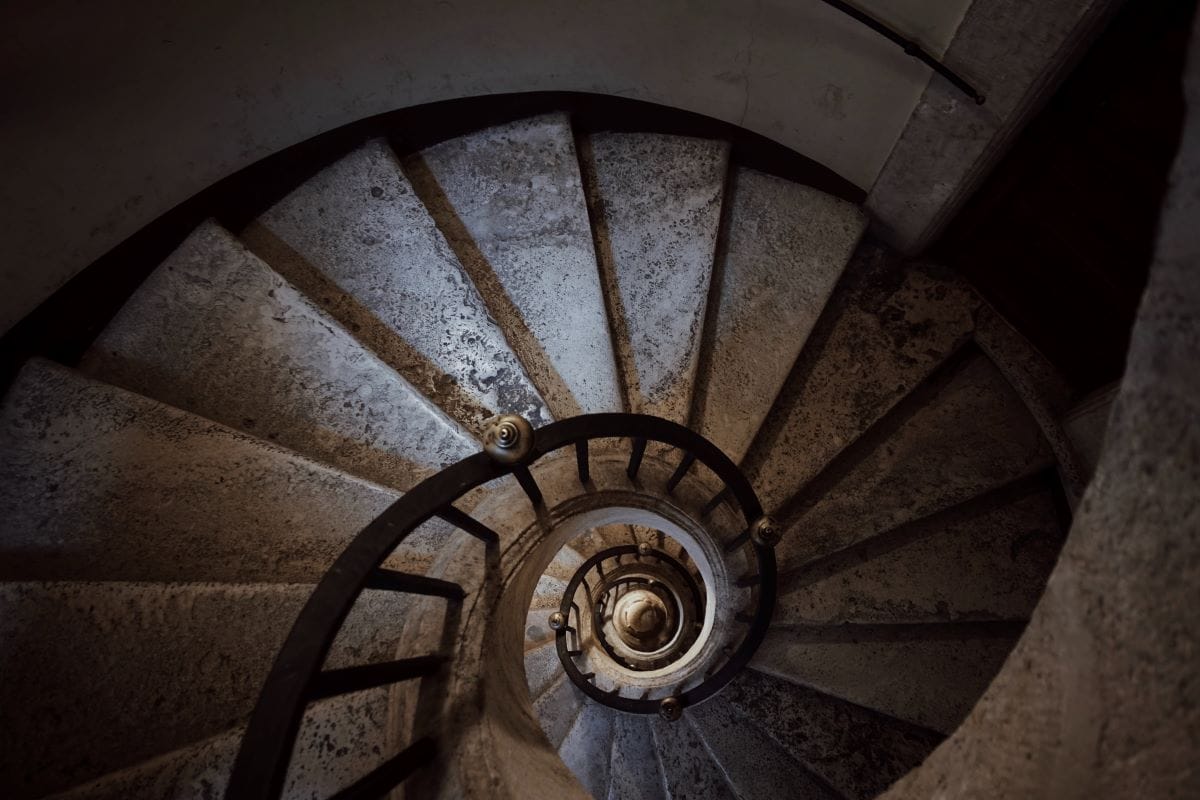
The Santa Maria Maggiore was built in the 5th century, during the papacy of Pope Sixtus III (432-440). Photo credit: Yan Ots
It’s home to an ancient Egyptian obelisk
In the rear of the church, facing Via Cavour, is one of the many obelisks in Rome. There are 13 in all. Some of them were poached (aka stolen) from Egypt during the Roman Empire and others were made in Egypt at the request of the rich and powerful during the Roman Empire. The one at Santa Maria Maggiore falls into the latter category. It was originally at the Mausoleum of Augustus and was eventually relocated and erected here in 1786 by Pope Pius VI.
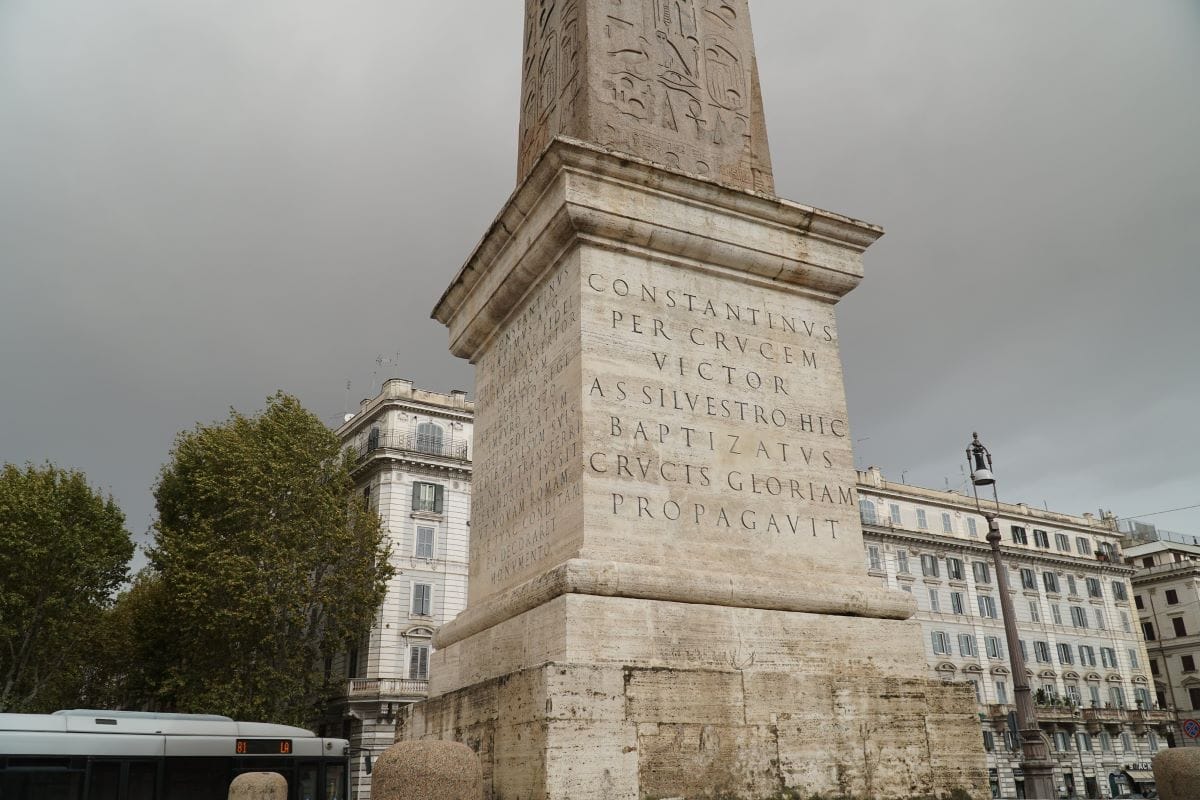
Rome is home to numerous ancient Egyptian obelisks, many of which were brought to the city during the Roman Empire. Photo credit: Deb Nystrom
It has a stunning golden Renaissance-era ceiling
Once inside, the first thing a visitor notices is the golden Renaissance-era ceiling of the nave. This is historically significant as it is said to be brought back by Columbus, the first gold brought to Europe from the New World. It was donated to Pope Alexander VI by Isabella and Ferdinand of Spain. The 250-foot-long nave, set off by 36 thick Ionic columns, is architecturally interesting as it is exactly in the height-width proportion of 1:1.
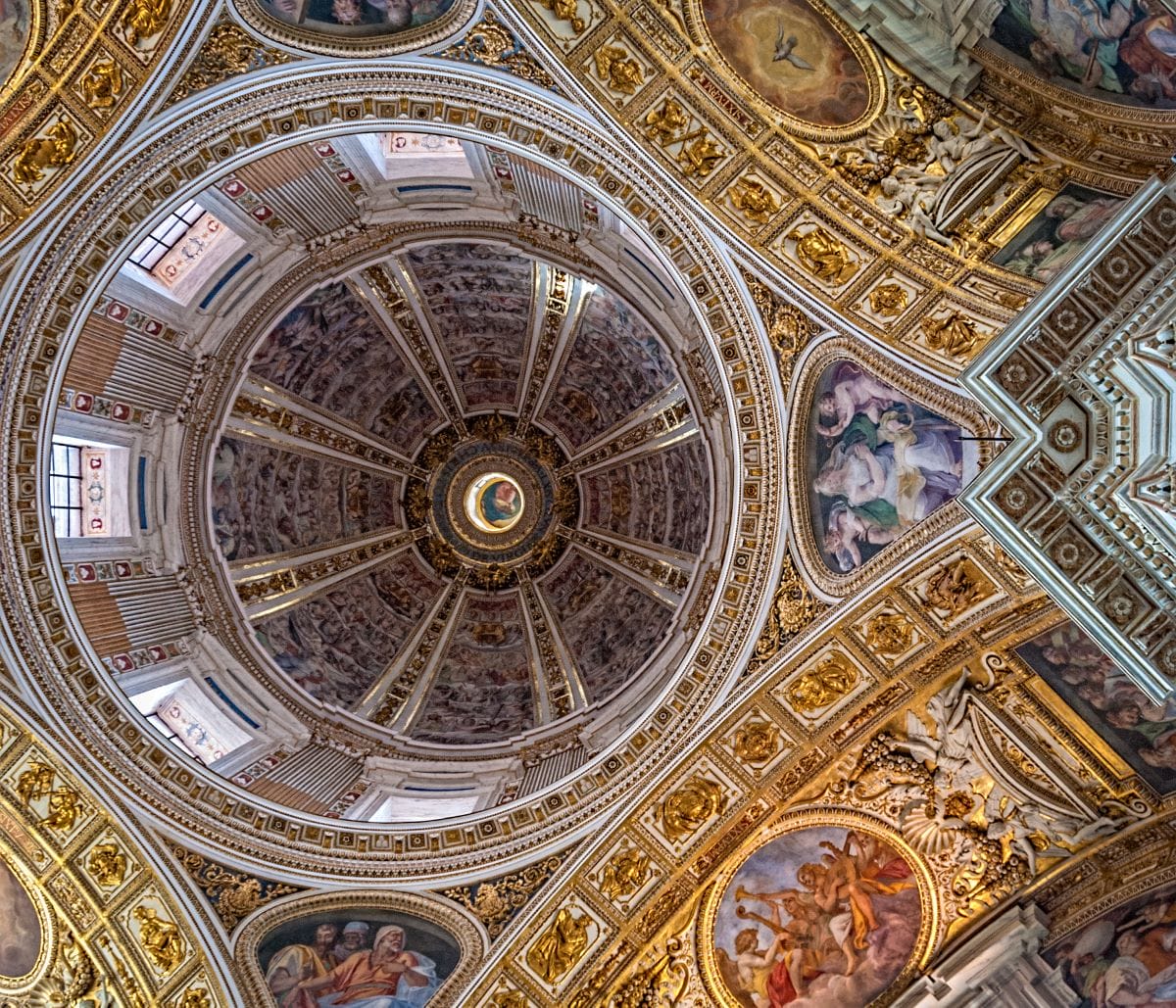
The ceiling of Santa Maria Maggiore is a true masterpiece of art and architecture. Photo credit: Gary Campbell-Hall
… And beautiful mosaics
The mosaics above the nave date back to the church’s founding in the fifth century and are in the Byzantine style and tell Abrahamic stories from the Old Testament. The murals above the mosaics are some of the earliest remaining depictions of the Virgin Mary.
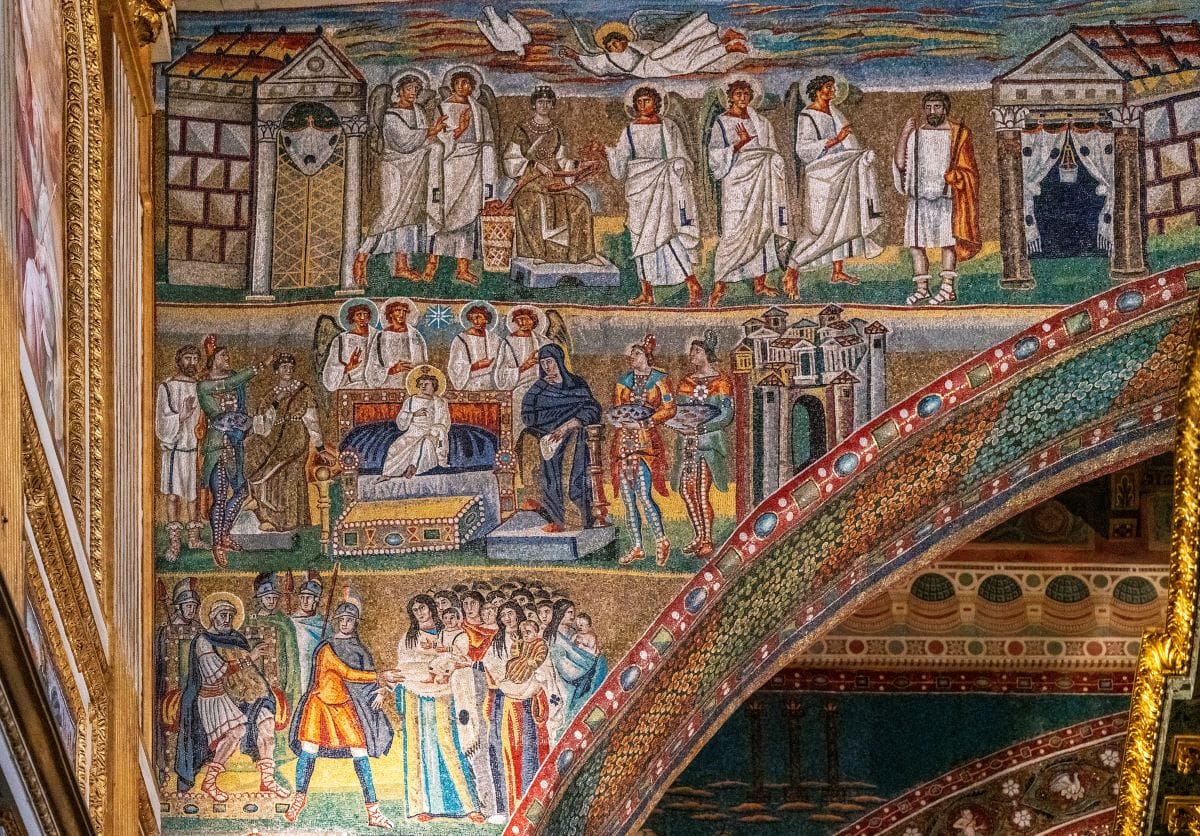
The mosaics inside Santa Maria Maggiore are exquisite examples of artistic craftsmanship. Photo credit: Steven Zucker
… And legendary paintings
In the Borghese Chapel, also known as the Pauline Chapel, dating from 1611, there is a legendary painting. It’s historically attributed to Saint Luke—supposedly the first Christian painter. Art historians, though, have dated it to the ninth century as it’s decidedly medieval in style. The painting of Mary and the infant Jesus is nicknamed “Savior of the People of Rome” because supposedly Pope Gregory lugged it around Rome in the year 593 to spare the city of the plague.
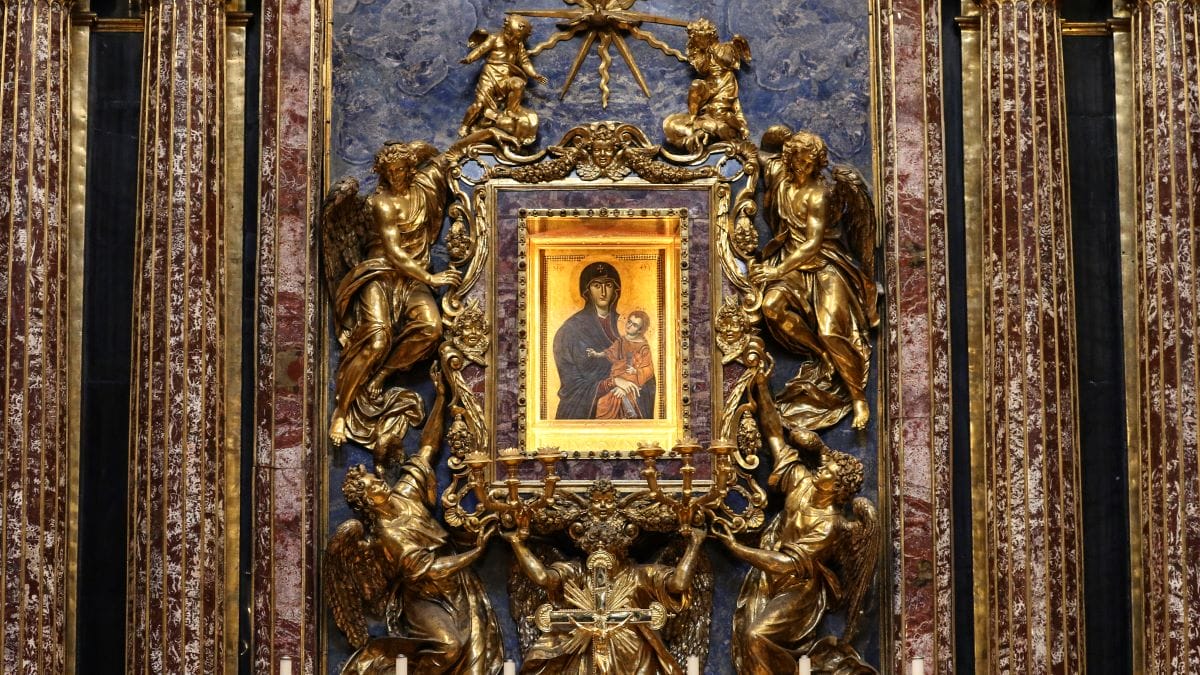
The painting of Mary and the infant Jesus is known by many as the“Savior of the People of Rome.” Photo credit: Lawrence OP
It’s home to Rome’s other Sistine Chapel
Another side chapel worth stopping by is the Sistine Chapel. The other Sistine Chapel in Rome. The chapel is the home of the tomb of Pope Sixtus V and, while not as stunning as the Sistine Chapel in the Vatican, it is adorned with lovely frescos in the theme of the Virgin Mary (surprise, surprise).
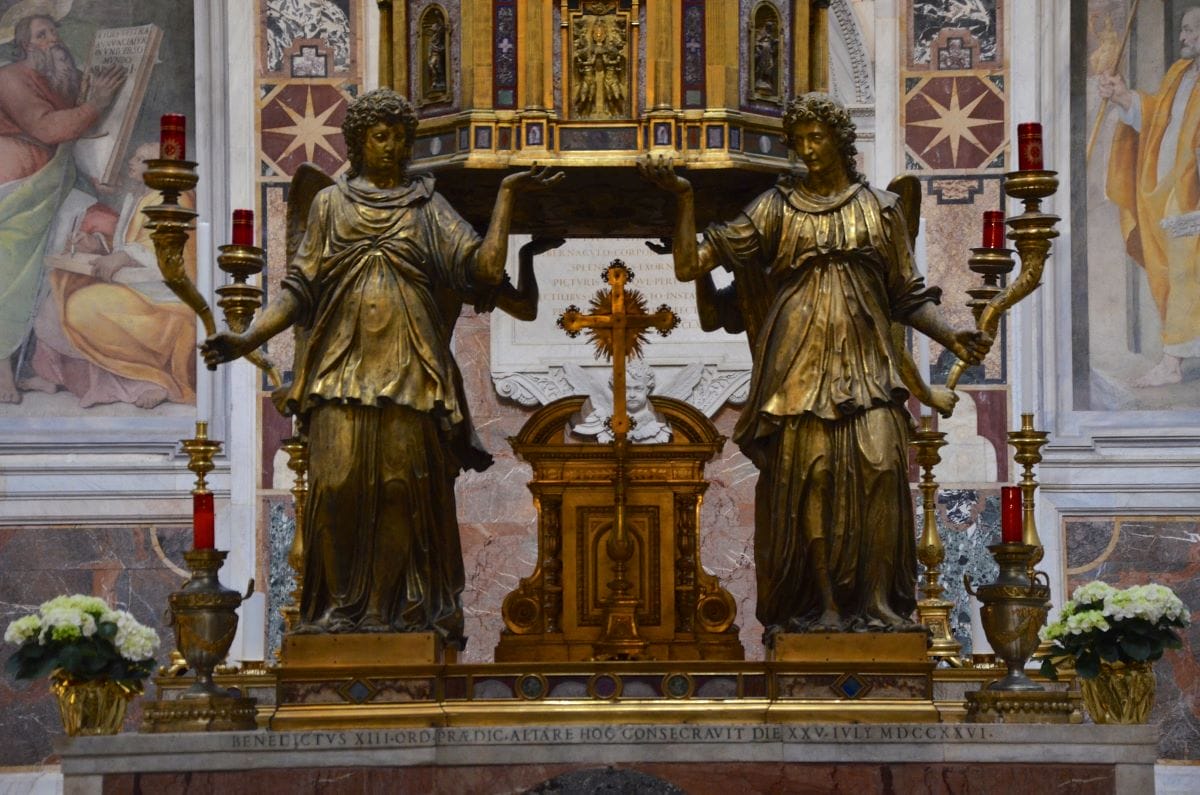
There’s another lesser-known Sistine Chapel, the “Cappella Sistina di Santa Maria Maggiore,” located in the Basilica of Santa Maria Maggiore in Rome. Photo credit: Joe Shlabotnik
There are tombs inside home to some iconic
There are several tombs inside the church, including a few popes, but the most famous one belongs to Gian Lorenzo Bernini, perhaps the great Baroque-era sculptor of the era. The inscription on the artist’s tomb reads, “Gian Lorenzo Bernini, the glory of the arts and the city, here rests humbly.”
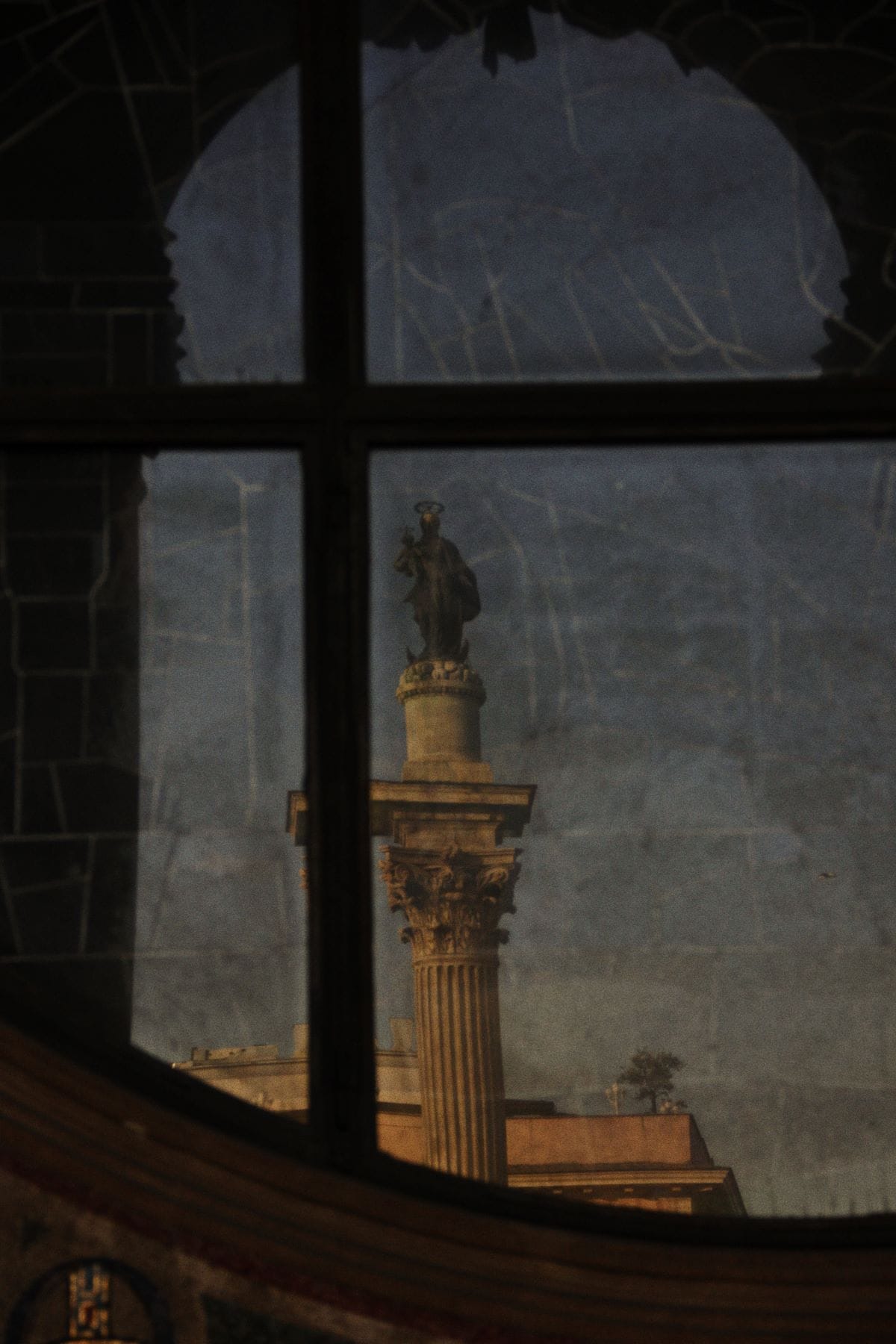
Santa Maria Maggiore is beautiful by day or by night. Photo credit: Francesco Alberti
by David Farley
View more by David ›Book a Tour

Pristine Sistine - The Chapel at its Best
€89
1794 reviews

Premium Colosseum Tour with Roman Forum Palatine Hill
€56
850 reviews

Pasta-Making Class: Cook, Dine Drink Wine with a Local Chef
€64
121 reviews

Crypts, Bones Catacombs: Underground Tour of Rome
€69
401 reviews

VIP Doge's Palace Secret Passages Tour
€79
18 reviews

Legendary Venice: St. Mark's Basilica, Terrace Doge's Palace
€69
286 reviews









